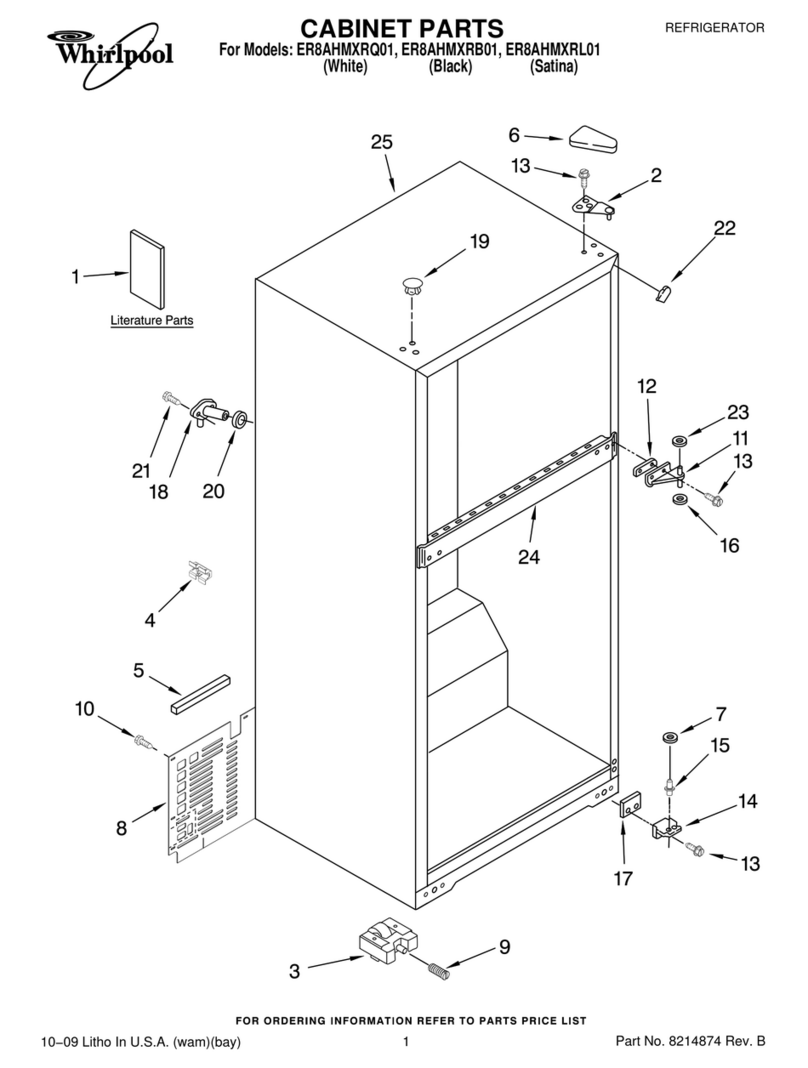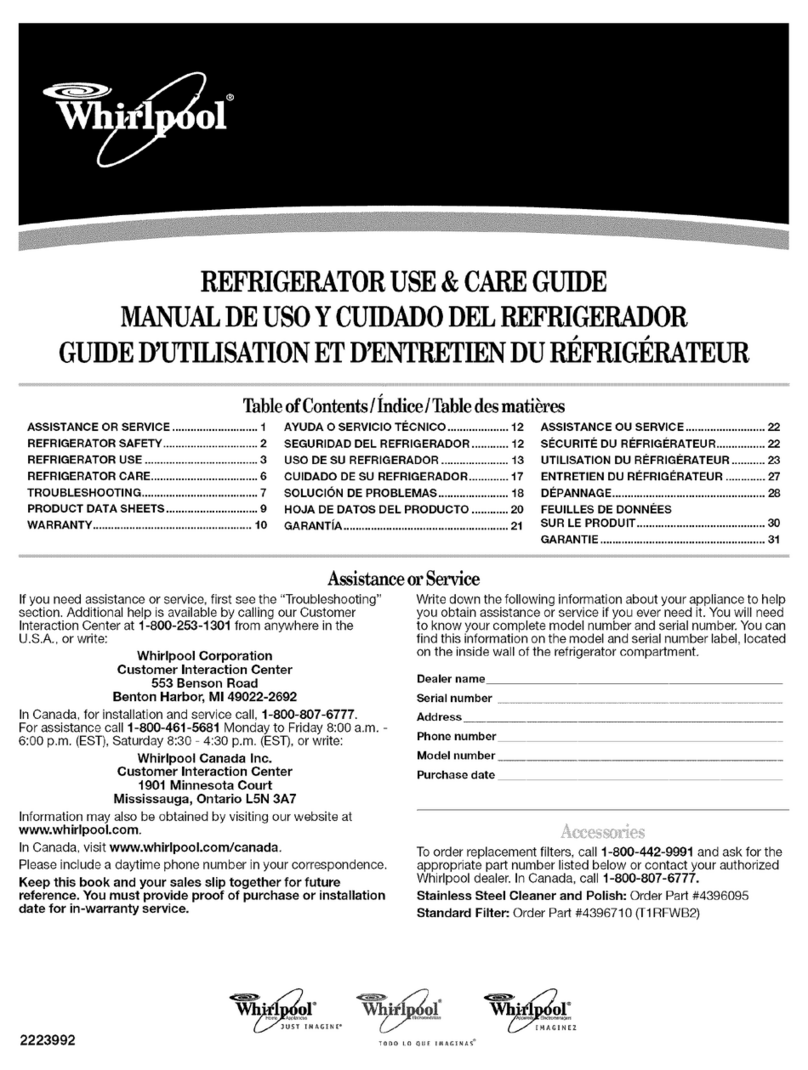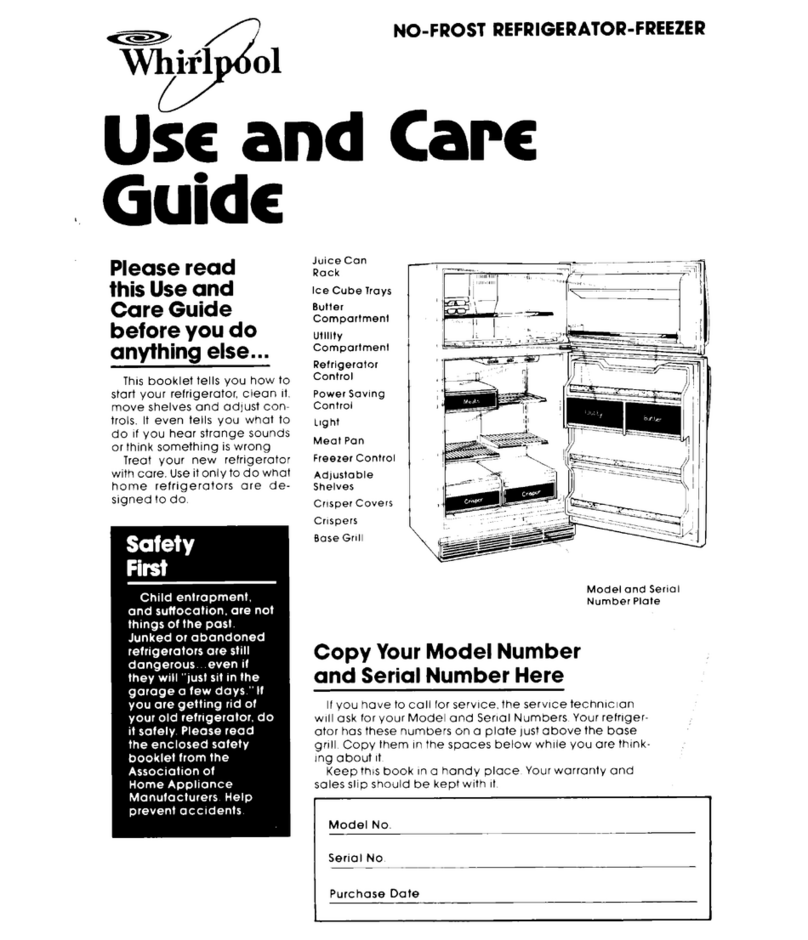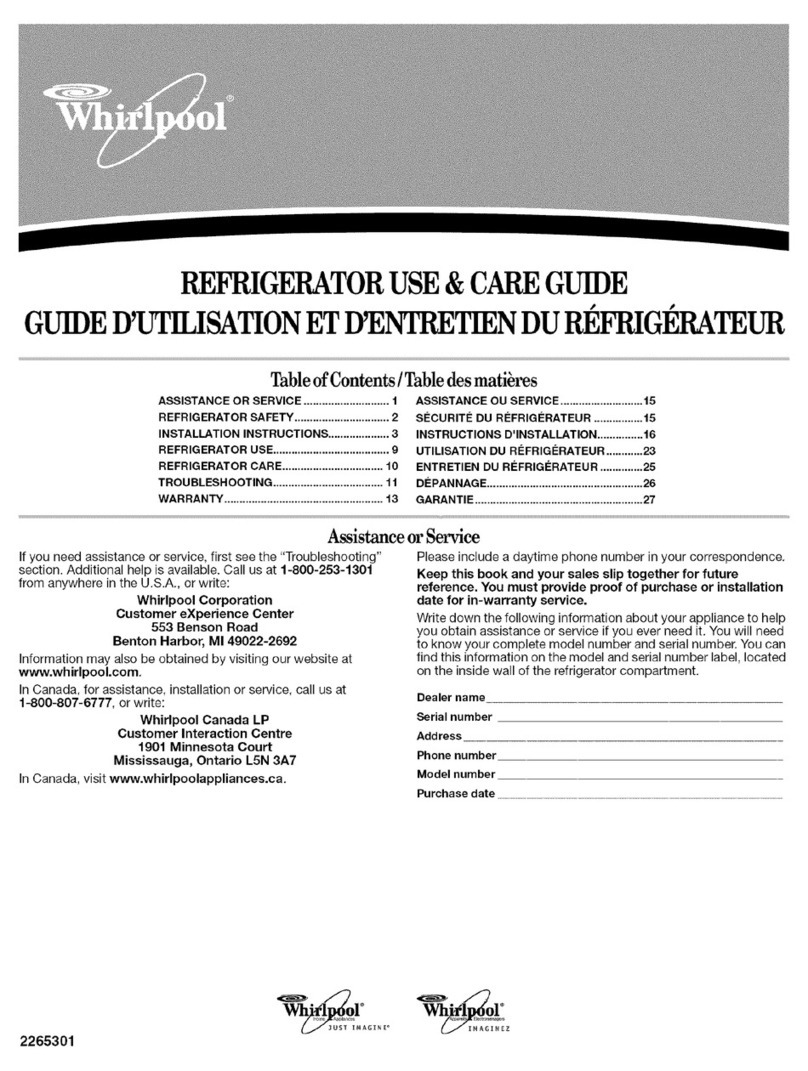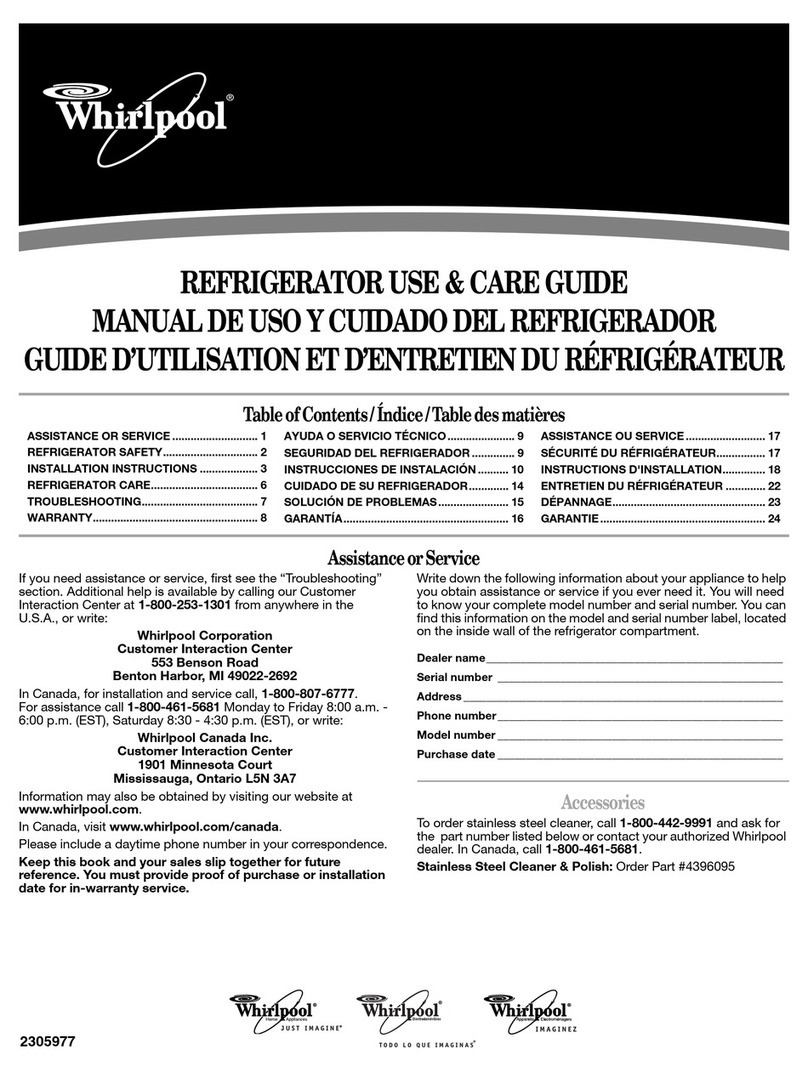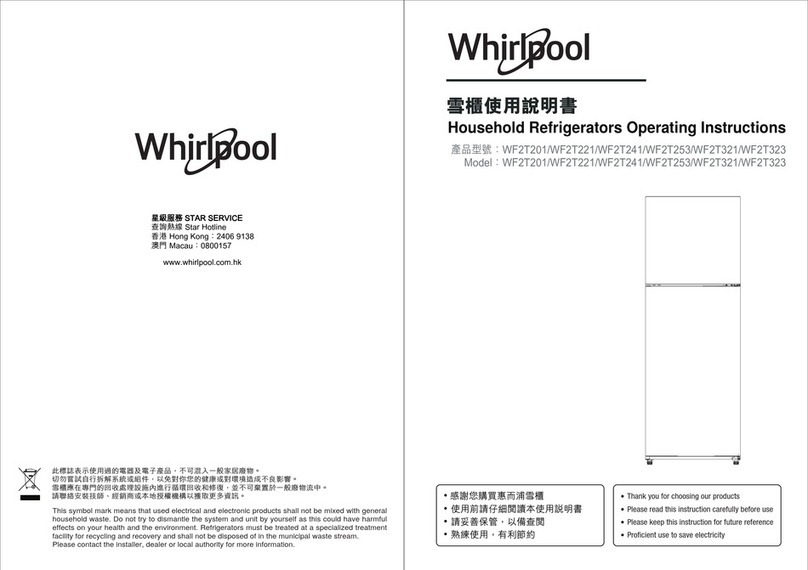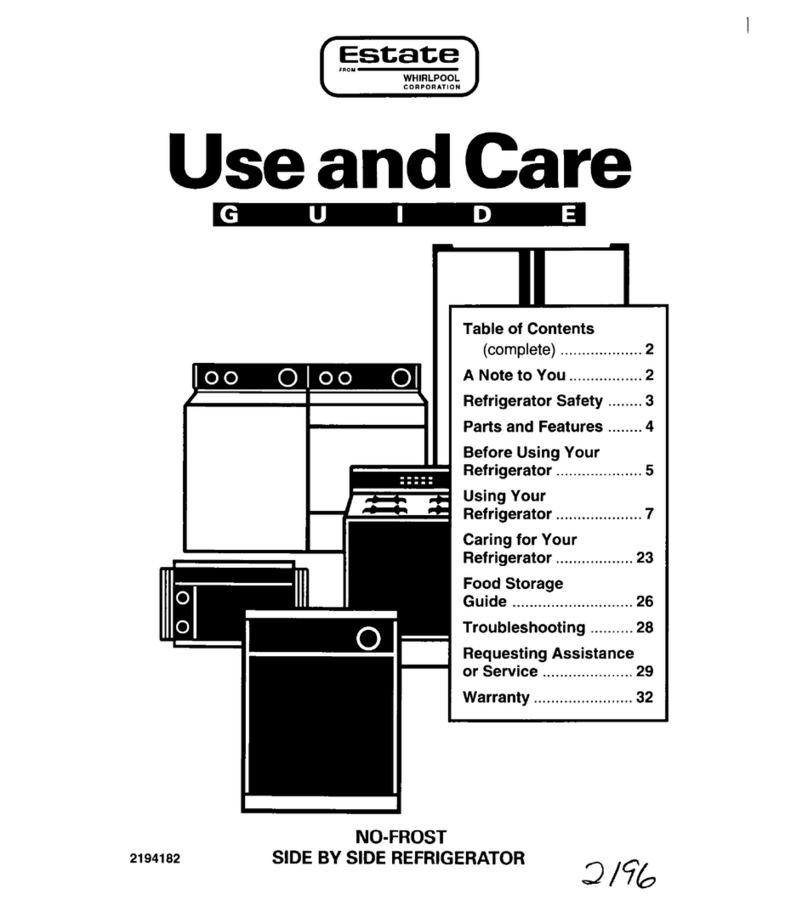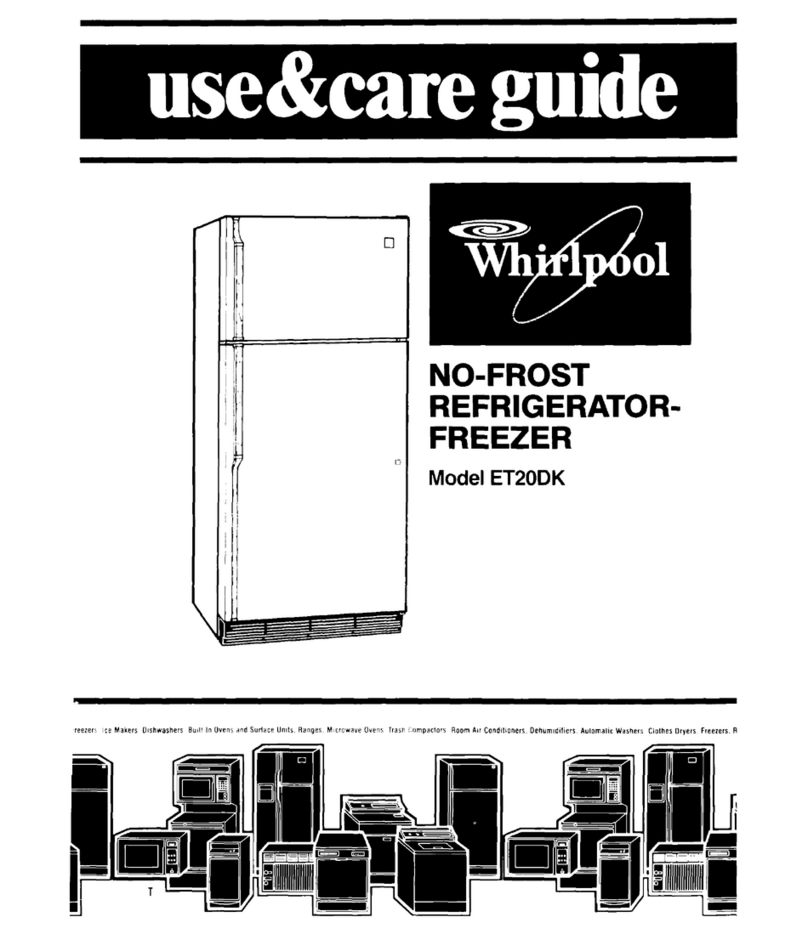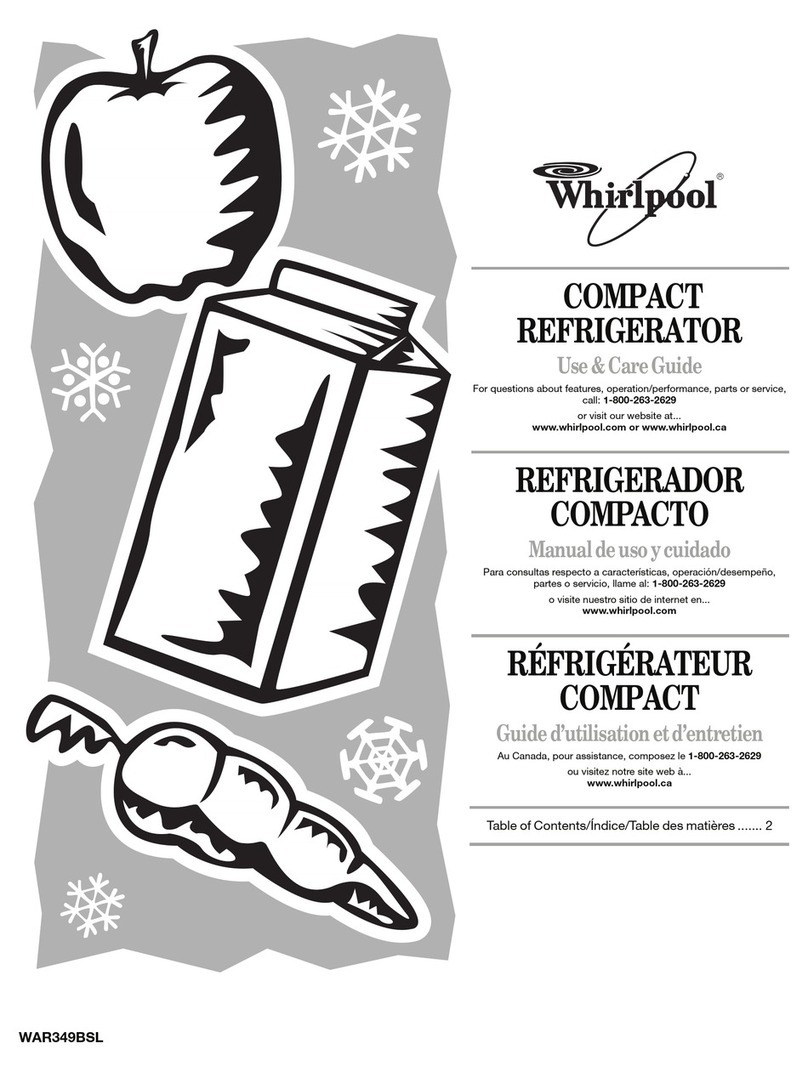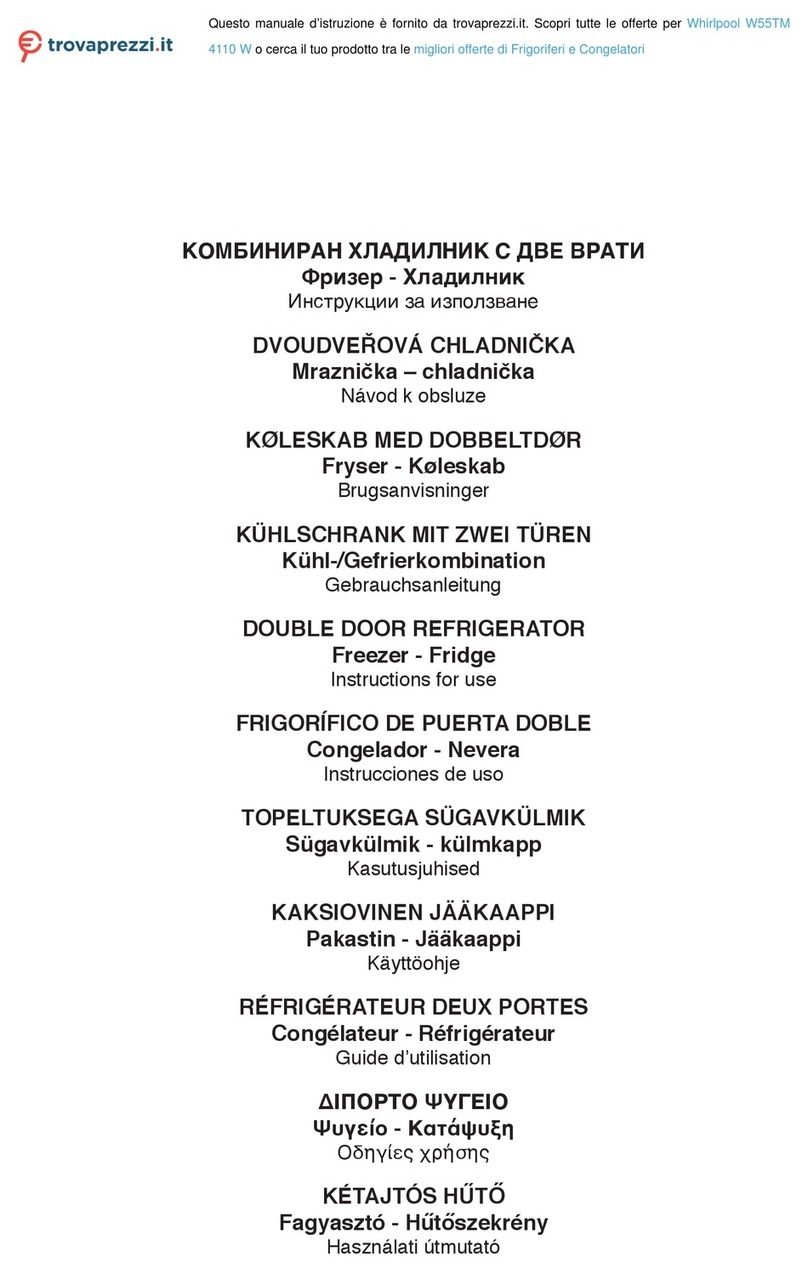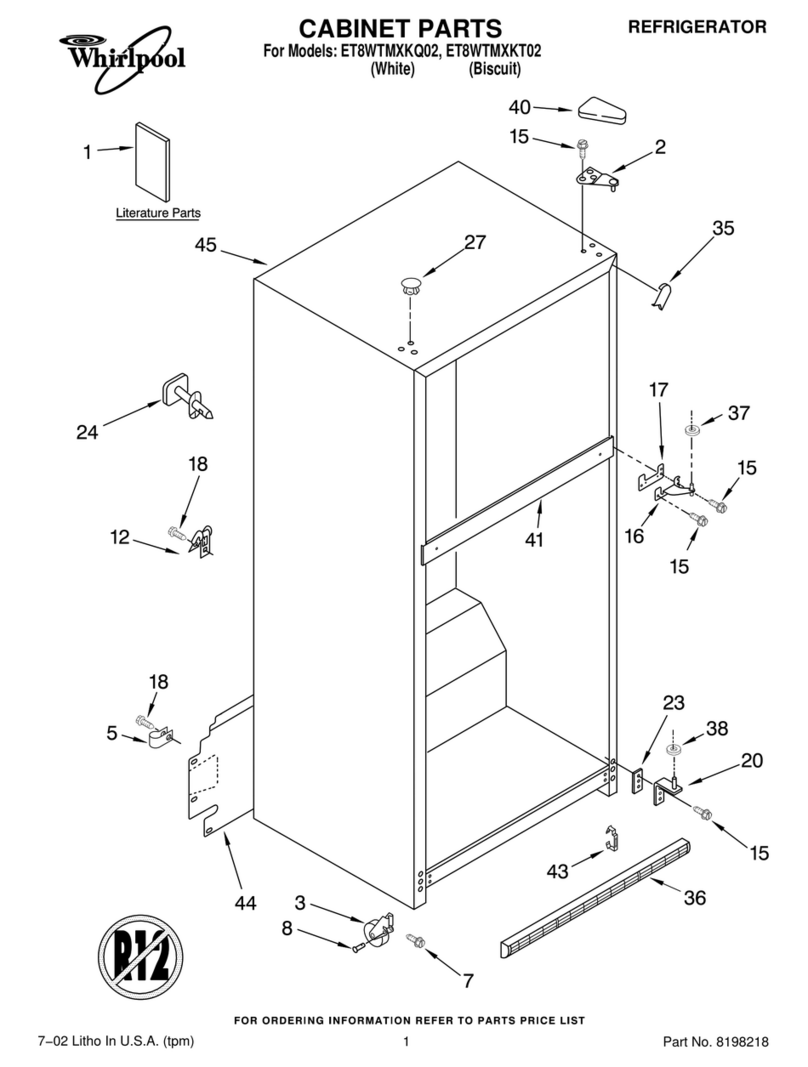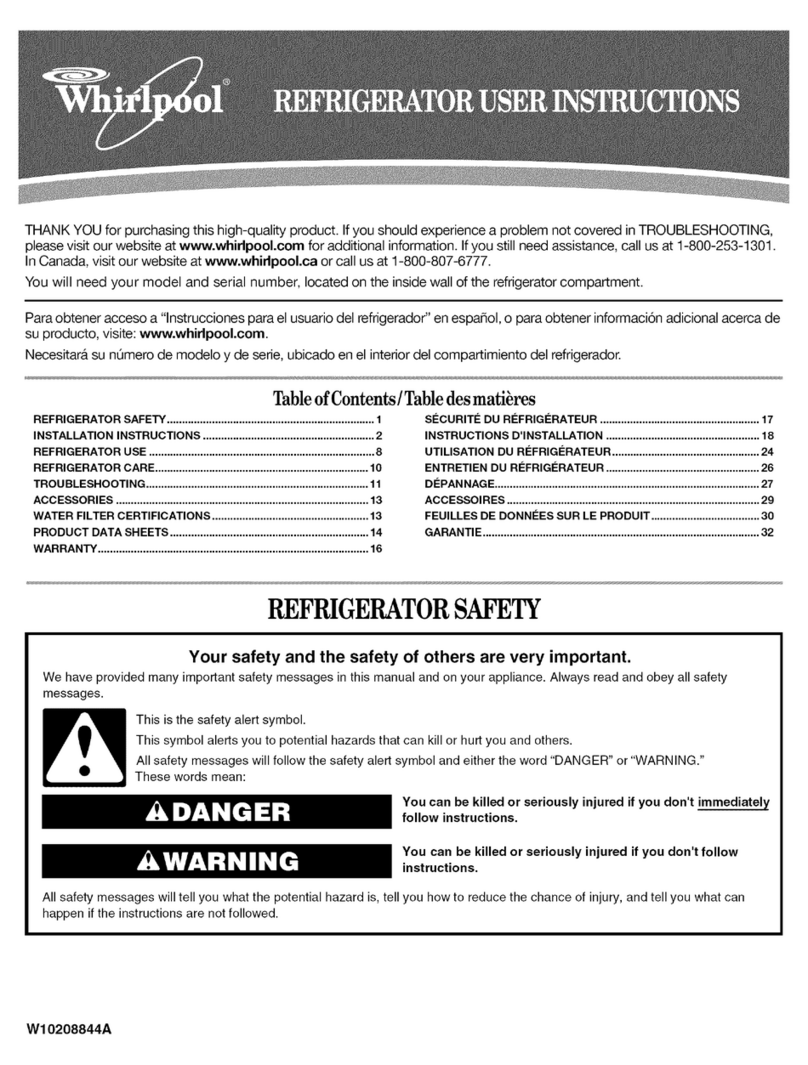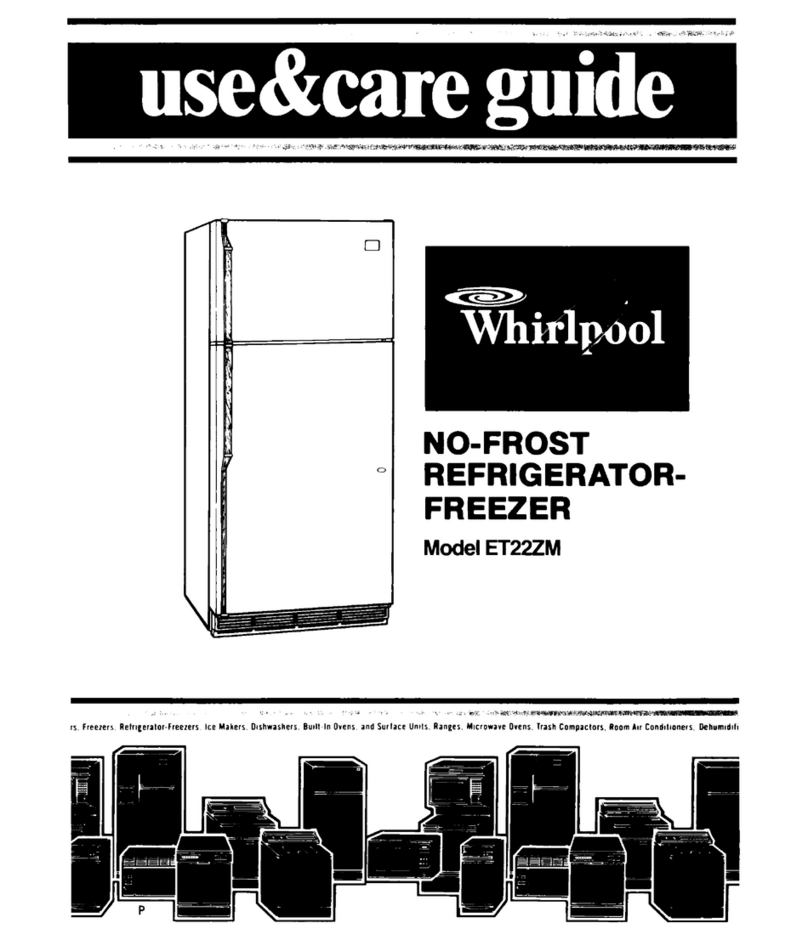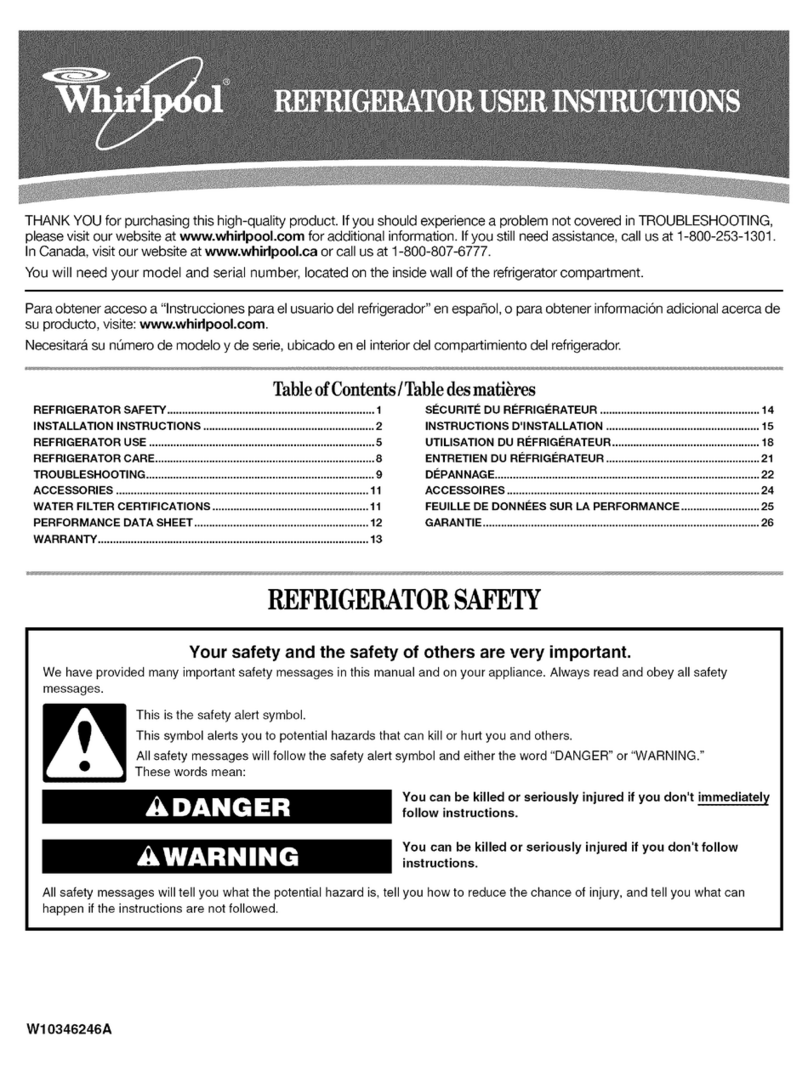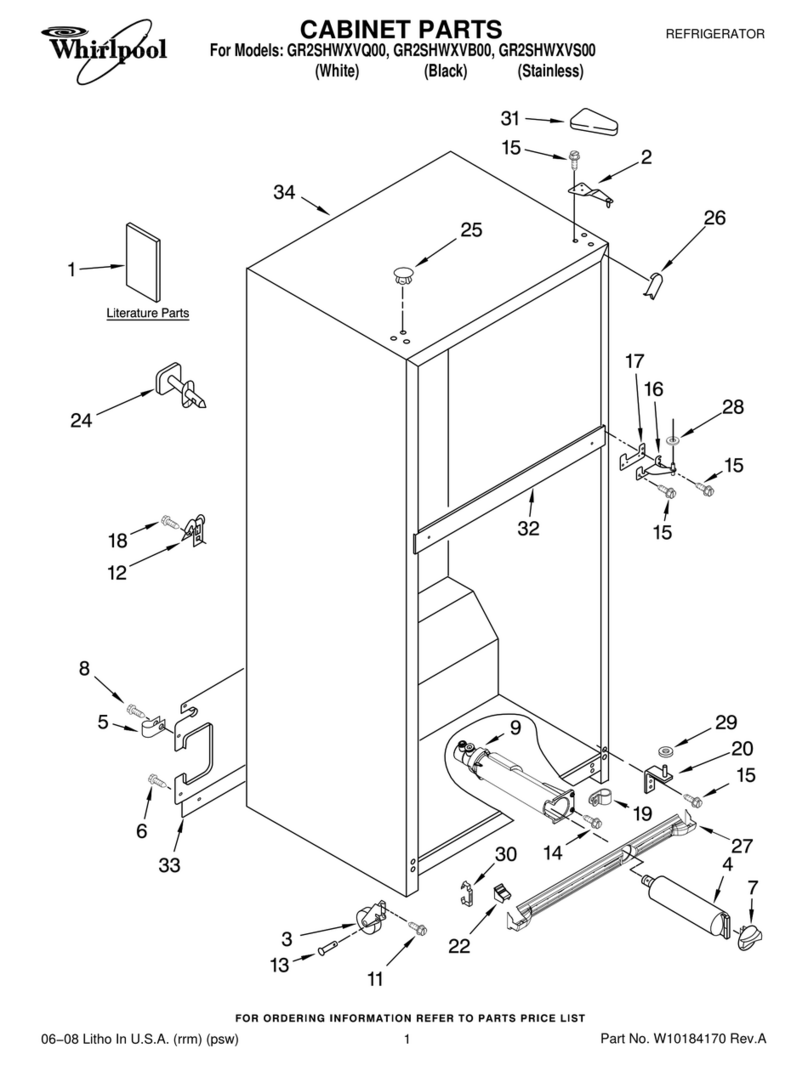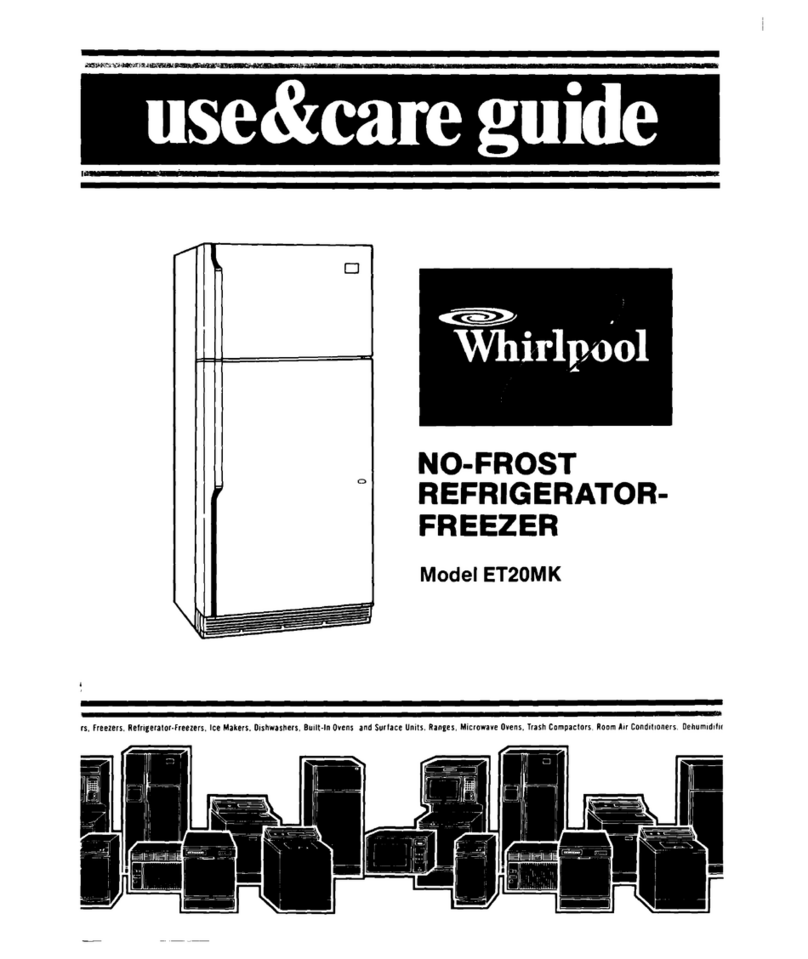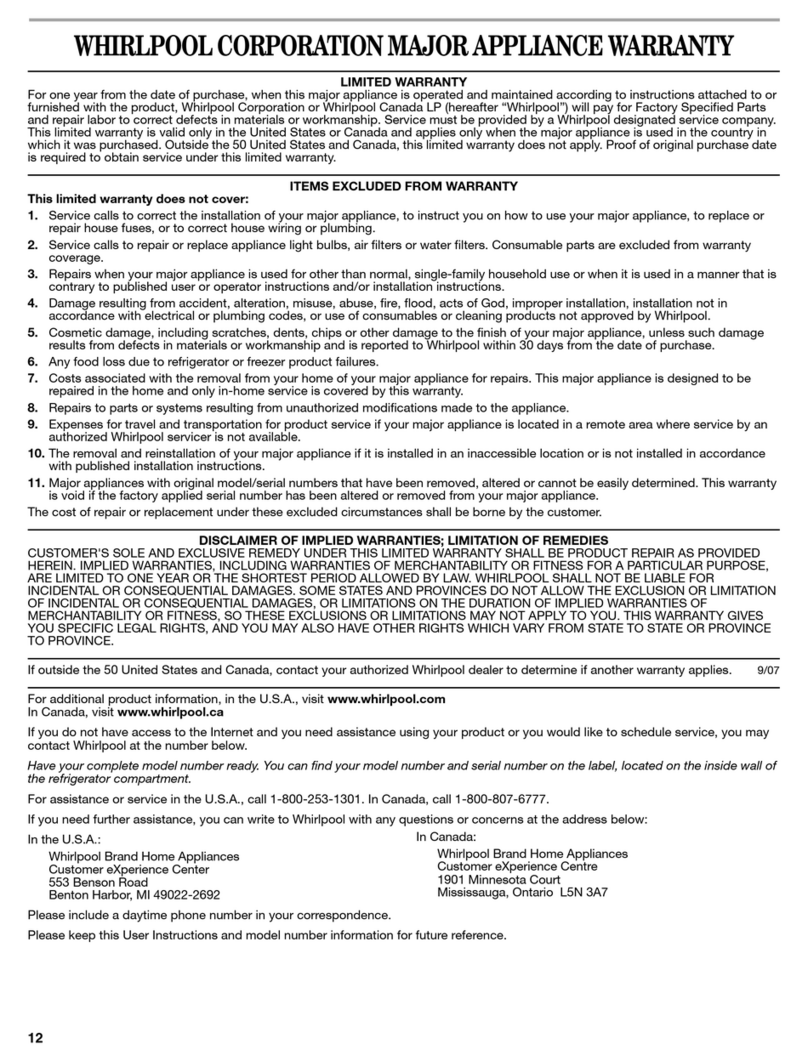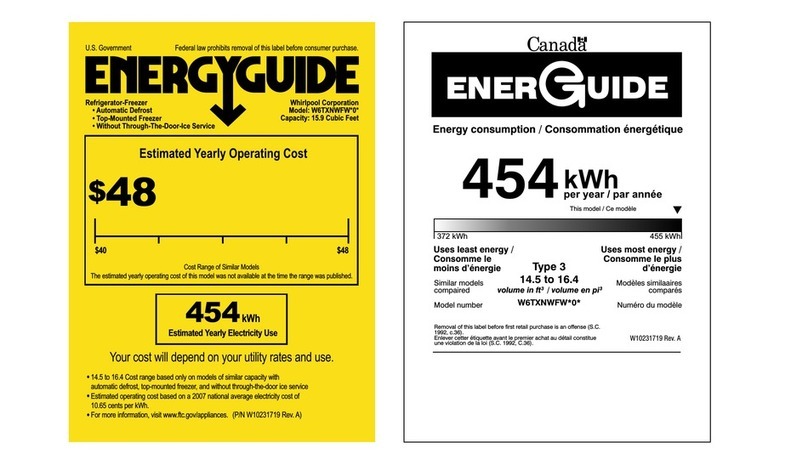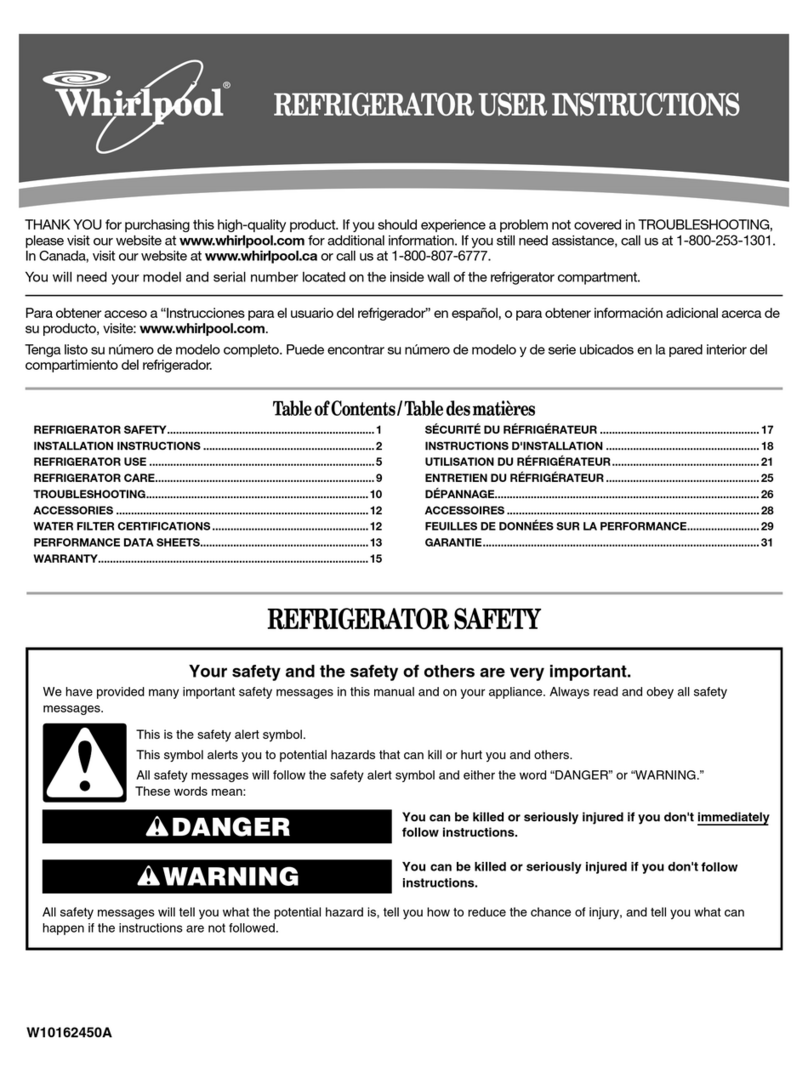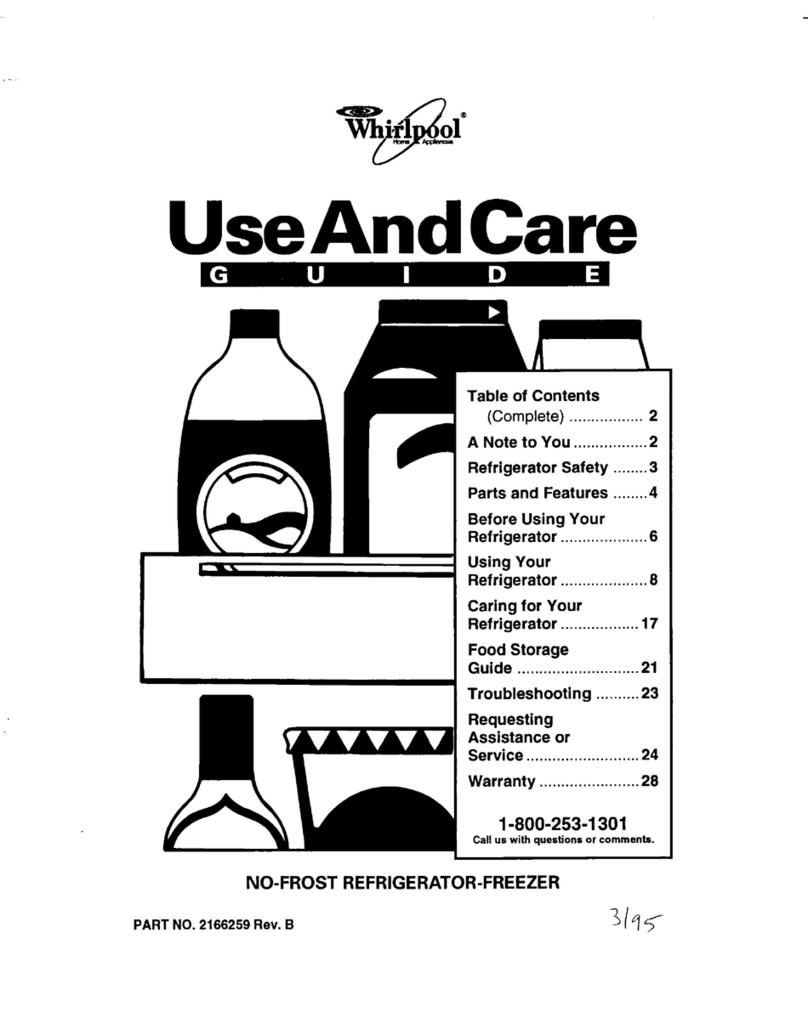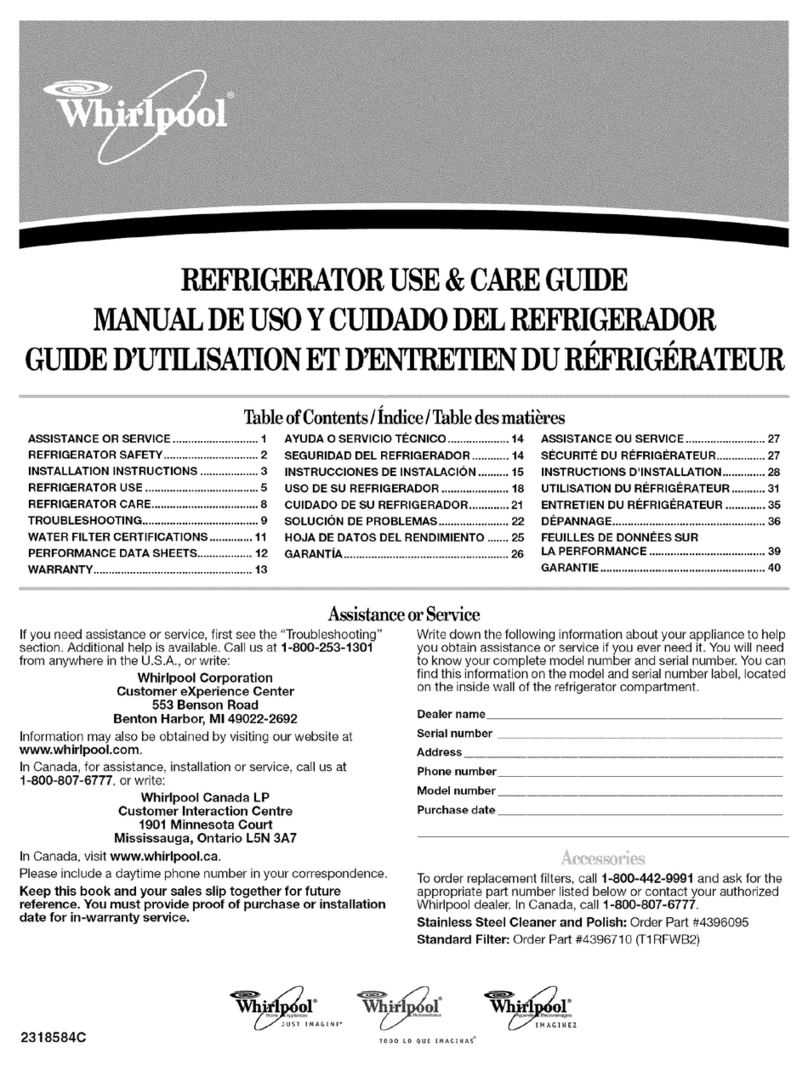
THANK YOU for purchasing this high-quality product. If you should experience a pro lem not covered in TROUBLESHOOTING or
PROBLEM SOLVER, please visit our we site at www.whirlpool.com for additional information. If you still need assistance, call us
at 1-800-253-1301. In Canada, visit our we site at www.whirlpool.ca or call us at 1-800-807-6777.
You will need your model and serial num er, located on the inside wall of the refrigerator compartment.
Table of Contents / I
´ndice / Table des matie` res
REFRIGERATOR AFETY............................... 2
Proper Disposal of Your Old Refrigerator..... 3
IN TALLATION IN TRUCTION ................... 3
Unpack the Refrigerator................................ 3
Location Requirements................................. 4
Electrical Requirements ................................ 4
Water Supply Requirements......................... 4
Connect the Water Supply............................ 5
Refrigerator Door(s) and Drawer................... 6
Door Closing and Door Alignment.............. 12
REFRIGERATOR U E ................................... 12
Opening and Closing Doors........................ 12
Using the Controls ...................................... 13
Crisper Humidity Control ............................ 13
Ice Maker..................................................... 13
Water Dispenser.......................................... 14
Water Filtration System............................... 14
REFRIGERATOR CARE................................. 14
Cleaning ...................................................... 14
Changing the Light Bul ............................. 15
Vacation and Moving Care ......................... 15
TROUBLE HOOTING.................................... 16
Refrigerator Operation ................................ 16
Temperature and Moisture ......................... 16
Ice and Water .............................................. 17
WATER FILTER CERTIFICATION .............. 18
PERFORMANCE DATA HEET .................. 19
WARRANTY.................................................... 21
EGURIDAD DEL REFRIGERADOR ............ 22
Co´ mo deshacerse adecuadamente
de su refrigerador viejo ............................... 23
IN TRUCCIONE DE IN TALACIO
´N .......... 23
Desempaque el refrigerador ....................... 23
Requisitos de u icacio´ n.............................. 24
Requisitos ele´ ctricos................................... 24
Requisitos del suministro de agua.............. 25
Conexio´ n del suministro de agua ............... 25
Puerta(s) y cajo´ n del refrigerador................ 27
Cierre y alineamiento de la puerta.............. 33
U O DE U REFRIGERADOR ...................... 34
Co´ mo a rir y cerrar las puertas.................. 34
Uso de los controles ................................... 34
Control de humedad del
cajo´ n para verduras .................................... 34
Fa´ rica de hielo........................................... 35
Despachador de agua................................. 35
Sistema de filtracio´ n de agua ..................... 35
CUIDADO DE U REFRIGERADOR............. 36
Limpieza ...................................................... 36
Co´ mo cam iar el foco................................. 36
Cuidado durante las
vacaciones y mudanzas.............................. 37
OLUCIO
´N DE PROBLEMA ....................... 38
Funcionamiento del refrigerador................. 38
Temperatura y humedad............................. 39
Hielo y agua................................................. 39
HOJA DE DATO DEL RENDIMIENTO ....... 41
GARANTI
´A...................................................... 43
E
´CURITE
´ DU RE
´FRIGE
´RATEUR................ 45
Mise au re ut ade´ quate de
votre vieux re´ frige´ rateur .............................. 46
IN TRUCTION D’IN TALLATION.............. 46
De´ allage du re´ frige´ rateur .......................... 46
Exigences d'emplacement ......................... 47
Spe´ cifications e´ lectriques........................... 47
Spe´ cifications de l’alimentation en eau...... 48
Raccordement de la canalisation d'eau ..... 48
Porte(s) et tiroir du re´ frige´ rateur.................. 50
Fermeture et alignement de la porte .......... 56
UTILI ATION DU RE
´FRIGE
´RATEUR ........... 57
Ouverture et fermeture des portes ............. 57
Utilisation des commandes ........................ 57
Re´ glage de l'humidite´
dans le ac a` le´ gumes ................................ 57
Machine a` glaçons...................................... 58
Distri uteur d’eau........................................ 58
Syste` me de filtration de l'eau ..................... 58
ENTRETIEN DU RE
´FRIGE
´RATEUR ............. 59
Nettoyage.................................................... 59
Remplacement de l’ampoule d’e´ clairage... 59
Entretien avant les vacances
ou lors d’un de´ me´ nagement....................... 60
DE
´PANNAGE.................................................. 61
Fonctionnement du re´ frige´ rateur ................ 61
Tempe´ rature et humidite´ ............................. 62
Glaçons et eau ............................................ 62
FEUILLE DE DONNE
´E
UR LA PERFORMANCE.............................. 64
GARANTIE ...................................................... 66
REFRIGERATOR
U ER IN TRUCTION
W10597601A
